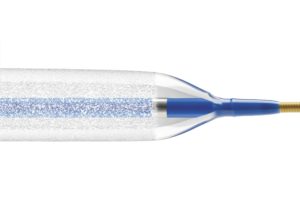 Royal Philips recently announced the four-year results from the ILLUMENATE European randomised controlled trial (EU RCT). The Stellarex drug-coated balloon (DCB) cohort demonstrated similar all-cause mortality compared with the control arm through four years. This analysis included missing data found post hoc to achieve a follow-up compliance of 93.9%, increasing the robustness of the statistical analysis.
Royal Philips recently announced the four-year results from the ILLUMENATE European randomised controlled trial (EU RCT). The Stellarex drug-coated balloon (DCB) cohort demonstrated similar all-cause mortality compared with the control arm through four years. This analysis included missing data found post hoc to achieve a follow-up compliance of 93.9%, increasing the robustness of the statistical analysis.
Along with the recently-published data on the ILLUMENATE Pivotal trial, this is the second RCT which has indicated similar mortality rates, further validating the long-term safety profile of Philips’ Stellarex low-dose DCB. The data were presented in the evening of 25 June as part of Vascular Interventional Advances’ (VIVA) first-ever Late-Breaking Clinical Trials Livestream.
The four-year ILLUMENATE EU RCT data are the latest from a series of trials evaluating the safety and efficacy of the Philips Stellarex .035″ DCB in restoring and maintaining blood flow in the superficial femoral artery and popliteal arteries of patients with peripheral arterial disease. The results were evaluated compared to percutaneous transluminal angioplasty (PTA) treatment with uncoated balloons, the current standard of care.
The mortality rate at four years shows no statistical difference between two patient groups, at 17.7% for the Stellarex patient group and 14.1% for the control group. Secondary safety outcomes were also similar across the two groups.
“These latest data from the ILLUMENATE EU RCT study add to the ILLUMENATE Pivotal RCT results and continue to demonstrate no statistical difference in mortality when comparing the DCB and PTA arms of the trial,” said William Gray, president of the Lankenau Heart Institute (Wynnewood, USA), an investigator for the Stellarex clinical trials who presented the results during the livestream.
“The results from the ILLUMENATE EU RCT trial continue to demonstrate durable long-term results at a high rate of follow-up compliance,” said Marianne Brodmann, professor, vascular specialist at the Medical University of Graz (Graz, Austria) and a primary investigator for the trial.
“The ILLUMENATE EU RCT results now establish Stellarex as the only paclitaxel DCB that has shown a consistent lack of statistical difference in mortality compared with PTA at each annual follow-up through four years across two randomised controlled trials,” said Chris Landon, general manager, Image Guided Therapy Devices at Philips. “We continue to proactively communicate relevant clinical findings to ensure physicians can make the best-informed decision for each patient.”













